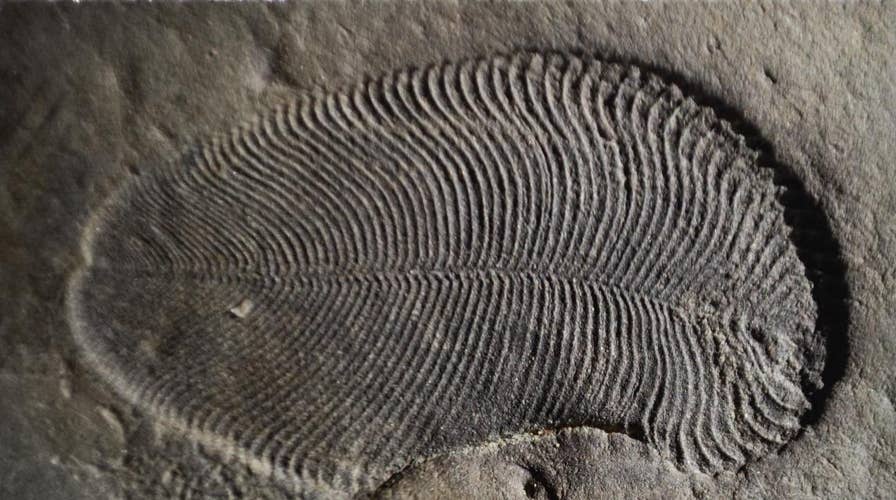Earliest known animal discovered
Scientists at the Australian National University have discovered the earliest known fossil dating back 558 million years. The discovery is being termed the ‘Holy Grail’ of paleontology.
It might not have been Indiana Jones who found it, but the "Holy Grail" (of fossils) has been discovered.
A previously unclassified creature that lived over 500 million years ago, considered the "Holy Grail of paleontology," has finally been identified, thanks to fossil fat.
The creature, known as Dickinsonia, was previously found in northwest Russia near the White Sea. It had not been classified before, until other recently found Dickinsonia fossils showed the presence of organic tissue, allowing researchers to identify molecules of cholesterol, described as "a hallmark" of animals.
ANGRY MUTANT GREEN CRABS ARE DESTROYING EVERYTHING IN THEIR PATH
“The fossil fat molecules that we’ve found prove that animals were large and abundant 558 million years ago, millions of years earlier than previously thought,” said Associate Professor Jochen Brocks from the ANU Research School of Earth Sciences in a statement.
Brocks added: “Scientists have been fighting for more than 75 years over what Dickinsonia and other bizarre fossils of the Edicaran Biota were: giant single-celled amoeba, lichen, failed experiments of evolution or the earliest animals on Earth. The fossil fat now confirms Dickinsonia as the oldest known animal fossil, solving a decades-old mystery that has been the Holy Grail of palaeontology.”
Dickinsonia came from a period known as the Ediacaran, which spanned about 94 million years from the end of the Cryogenian Period to the beginning of the Cambrian Period 541 Mya. Like other creatures alive during the period, it had a lack of physical features, such as limbs, organs or even a discernible head.
Its body measured approximately 5 feet in length "and was oval shaped with rib-like segments running along its body," the researchers noted in the statement.
INDIANA MAN WARNS LOCALS TO 'BEWARE' OF GIANT SPIDERS AFTER SPOTTING 6-INCH CRAWLER AT WORK
The Dickinsonia might well be the earliest known animal, but the subject is still up for debate, according to LiveScience.
There is evidence that hints at the existence of sponges 635 million years ago, though the oldest fossilized sponge is only 520 million years old. According to a study done last year, jellyfish might be older, but that study used genetic analysis and not fossilized evidence.
The oldest life-form on Earth are microbes, which existed on the planet approximately 3.95 billion years ago.
“The problem that we had to overcome was finding Dickinsonia fossils that retained some organic matter,” said ANU doctoral student Ilya Bobrovskiy, who discovered the Dickinsonia.
“Most rocks containing these fossils such as those from the Ediacara Hills in Australia have endured a lot of heat, a lot of pressure, and then they were weathered after that – these are the rocks that palaeontologists studied for many decades, which explained why they were stuck on the question of Dickinsonia’s true identity,” he added.
GIANT SPIDER WEB STRETCHES 1,00 FEET ACROSS LAGOON: THEY'RE HAVING A 'PARTY'
Bobrovskiy found the fossils in the middle of the White Sea cliffs, approximately 200 to 330 feet high.
As soon as Bobrovskiy showed the findings to Brocks, he immediately realized what he saw, noting they were a game changer and he "immediately saw the significance.”
The findings were published in the scientific journal Science.
Follow Chris Ciaccia on Twitter @Chris_Ciaccia





















